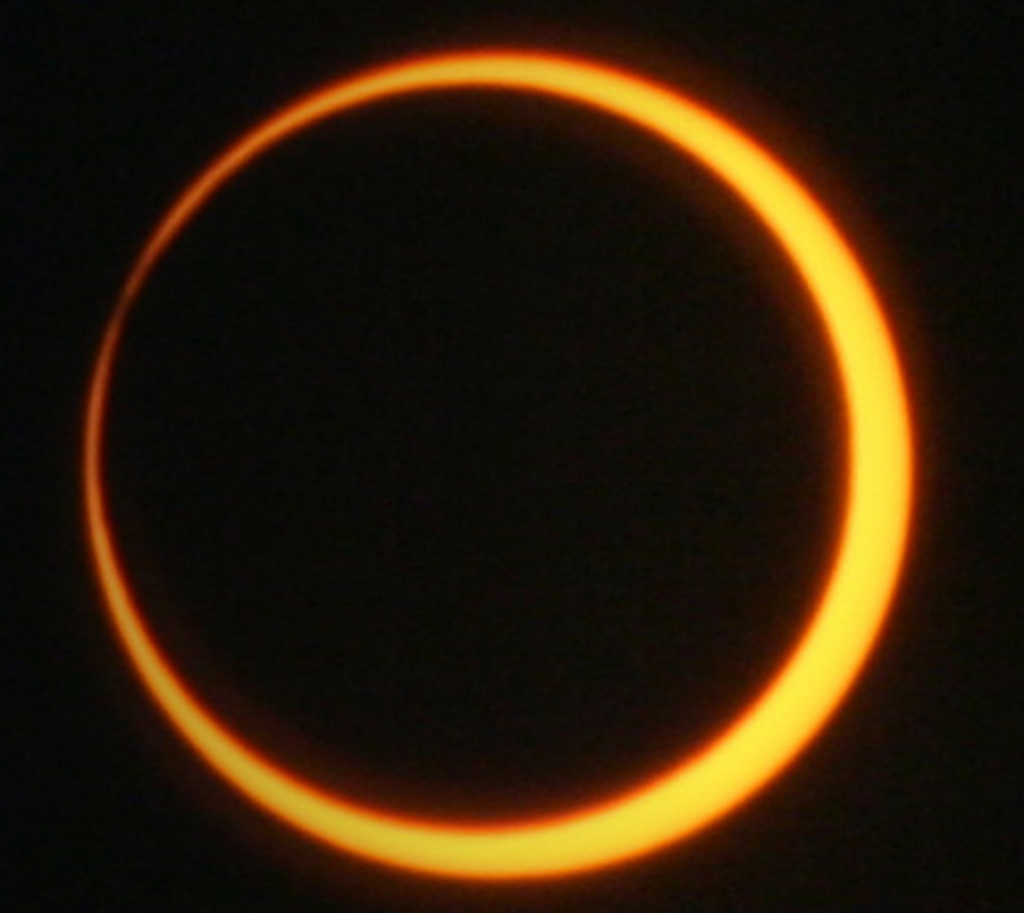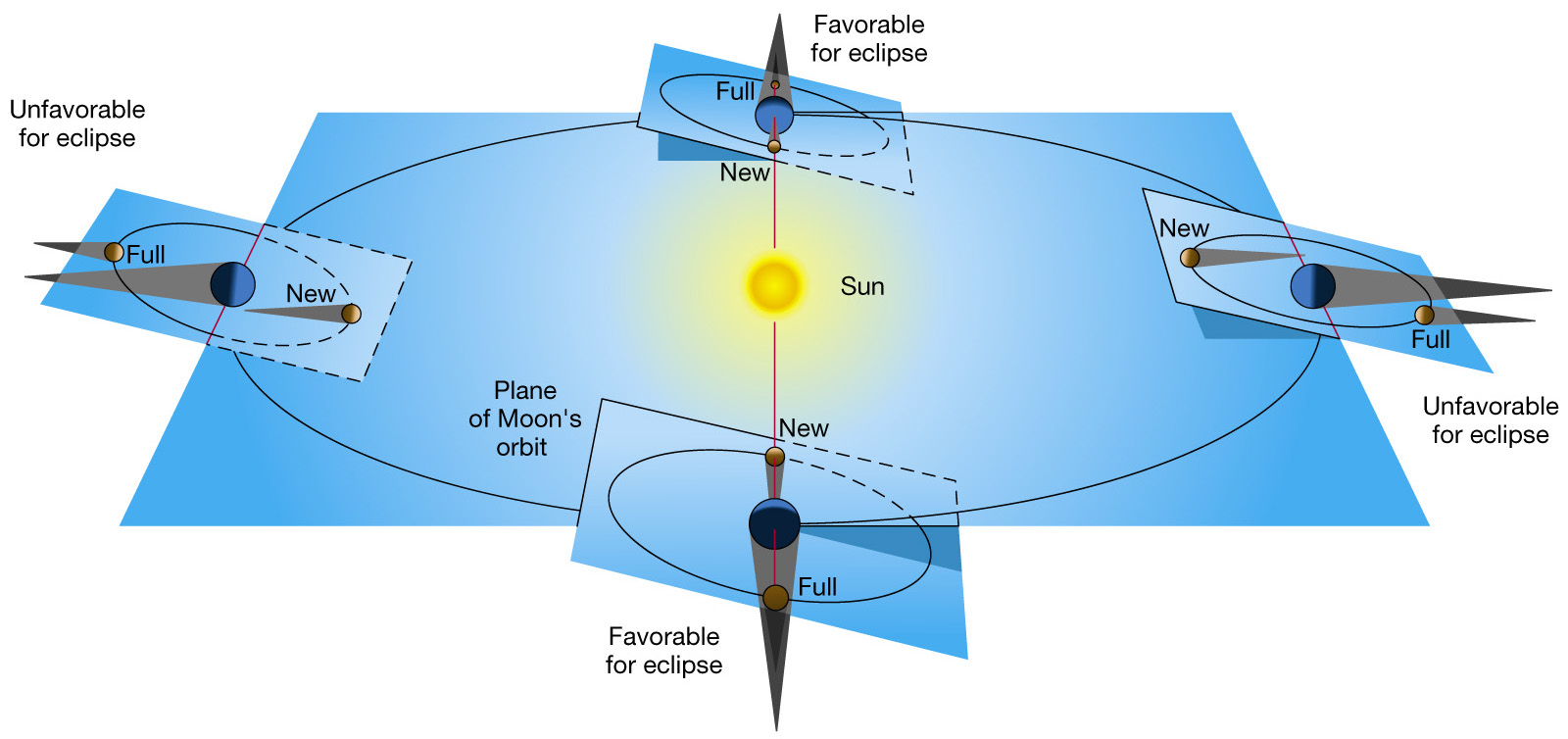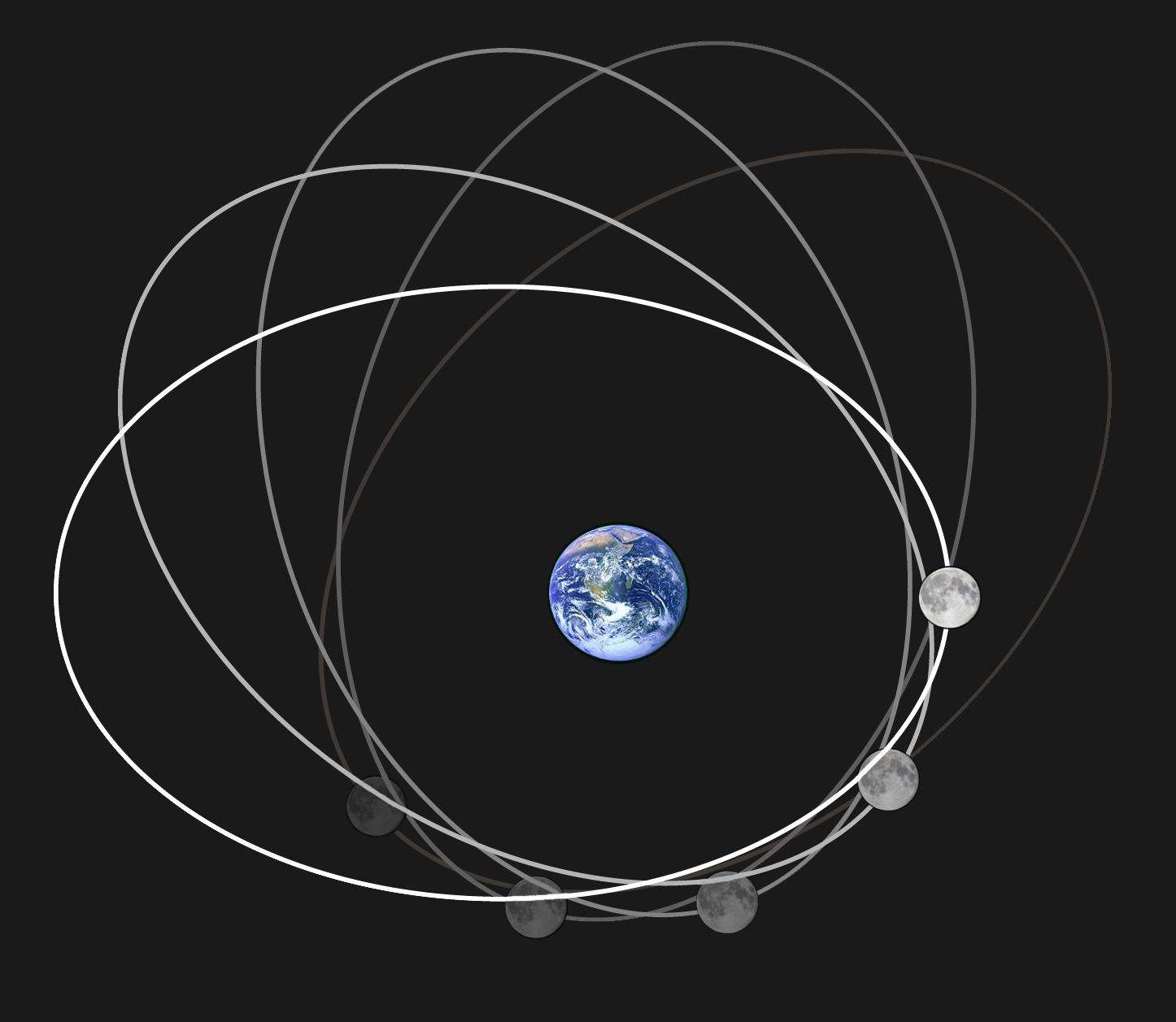
On the morning of Saturday, Oct 14, the Sun will transform into the eye of Sauron, a dark circle wreathed in otherworldly flame. Sauron’s gaze will cross the surface of the Earth from the Pacific Ocean, through the Pacific-Northwest and Southwest, and down the spine of Central America, before fizzling out of the east coast of Brazil. Though not as dramatic as total eclipses, annular eclipses like this one are more rare, owing to the eccentricities of orbital mechanics. And the same celestial forces have also woven a tapestry of occultations connecting the Oct 14 eclipse back to the founding of the Cologne Cathedral, a turning point in modern science, and the dawn of a new age.

The Oct 14 Solar Eclipse
Officially, the Oct 14 solar eclipse will begin in the Pacific Ocean, and the Moon’s shadow will sweep east at about 1000 mph. As seen from Boise, the eclipse will begin at 9:07a MT with the maximum darkness at about 10:24a MT, and the whole thing will last until 11:47a MT.
Unlike the 2017 solar eclipse, this eclipse will be annular. That means that the Moon will only cover part of the Sun but that the Moon’s image will, during the eclipse, be contained entirely within the image of the Sun (as seen at left). This alignment means the Moon will be wreathed by the Sun’s photosphere during annularity, resembling Sauron’s lidless flaming eye from The Lord of the Rings.
From Boise, we’ll see 84% obscuration at maximum, probably enough to be noticeable but not as dramatic as a total eclipse. You will definitely be able to see the dark disk of the Moon cross the Sun, but to view it safely, you will need eclipse shades or a solar telescope. At no point during the eclipse will it be safe to look at the Sun without protection!
Annular eclipses happen when the Moon is a little farther from the Earth than during a total eclipse, making the Moon appear a little smaller. Because the Moon’s orbit around the Earth is elongated, sometimes it’s closer and sometimes farther away. This is why we sometimes have a super moon during a full moon. You might wonder why we don’t always have the same kind of eclipse. Is there some pattern to the eclipses? As it turns out, we’ve understood the patterns of eclipses for thousands of years.
A Precession from Babylon
Meticulously collecting astronomical observations for millenia to cast accurate horoscopes, Babylonian astronomers had a rich understanding of cosmic patterns and could predict eclipses with fair accuracy. They recognized many lunar cycles, including an 18 year cycle of eclipses – every 18 years, a lunar eclipse would repeat in just about the same place in the sky. The cycle, later named the “saros cycle” by Edmund Halley, arises when several voices in the cosmic fugue synchronize for an instant.
If the Earth and Moon were perfect spheres and the Moon only felt the gravity from Earth, the Moon’s orbit would be like an fixed elliptical train track. The “apsidal” points in the track nearest to Earth (called “perigee”) and farthest from Earth (called “apogee”) would stay in the same places forever. The points in the Moon’s track where the Moon traveled from above to below or below to above the Earth’s orbit (called the “nodes”) would also remain fixed. The Moon would circle the Earth, like a train stuck to the track, every 29.5 days. Eclipses in this fictional system would always happen at the same time every year, as the Moon passed through the nodes.

Of course, the Earth is NOT a perfect sphere – it has a little pot belly around the equator – and the Sun exerts a substantial gravitational pull on the Moon. Both effects perturb the Moon’s orbit, and the resulting change comes in two flavors – apsidal and nodal precession. Apsidal precession means that the long axis of the Moon’s elliptical orbit changes direction, circling eastward all the way around the Earth once every 8.85 years. Nodal precession means the Moon’s orbital plane or nodes circle all the way around the Earth, like a coin rolling around its edge. This cycle takes 18.6 years.

So the Moon has three types of orbital motion. The first is the normal, circling-the-Earth motion we’re used to thinking about as taking a month. The other two, apsidal and nodal precession, take longer but are happening at the same time. The three cycles, each with its own rhythm, sync up every 6585.3211 days. When they do, the Earth, Moon, and Sun are very nearly lined up the same way they were the last time, completing one Saros cycle. The resulting eclipse closely (though not exactly) resembles the last eclipse in that Saros.
But the cycles don’t sync up perfectly – for instance, the Moon’s node shifts eastward by about 0.5º with each cycle. Consequently, each eclipse in a Saros is a little different from the one before it because the Moon is in a slightly different place. This means that the type of eclipse during a particular saros will change. A saros usually starts with a partial eclipse before working its way up to total and annular eclipses. Since the three cycles eventually fall out of synchronization for a specific saros, saroses don’t last forever, only about 1000 years.
The Long Count

Saros cycles bestride the long span of history, providing a kind of rhythmic punctuation that connects historical events. The Oct 14 eclipse is the 44th in saros cycle 134. This saros began all the way back on 1248 Jun 22. The foundation stone for the Cologne Cathedral in Germany was laid later that year on the site of an even older cathedral, which had been completed in 818 but was destroyed by fire in 1248 Apr. Rivaling the length of a saros cycle, Cologne Cathedral wasn’t officially completed until 1880 (one year after the 36th eclipse in saros 134).
Eclipse 21 in the cycle took place in February of 1609, an epochal year in astronomy. In May that year, a relatively obscure Italian professor got wind of a novel Dutch invention and decided to build one for himself. Though the invention had, until that time, only been used for military and naval purposes – it could help you see ships at sea, the professor decided to point it into the night sky instead. The professor was Galileo, and the Dutch invention was the telescope.
And September of 1951 saw the 40th eclipse in the saros, an annular eclipse that crossed the Atlantic from the East Coast through southern Africa. But, as the lunar darkness crossed the Earth, a new, more menacing darkness soon descended upon the world. In November 1952, the United States augured the thermonuclear age with the first thermonuclear weapon in the Marshall Islands. In December, Experimental Breeder Reactor 1 in southeast Idaho became the first nuclear power plant to generate electricity.
Learn more at Boise State Physics’ First Friday Astronomy Friday, Sep 1 at 7:30p MT when Prof. Brian Jackson will discuss the upcoming solar eclipse – https://www.boisestate.edu/physics/seminars-and-events/. The talk will also be live-streamed at boi.st/astrobroncoslive.